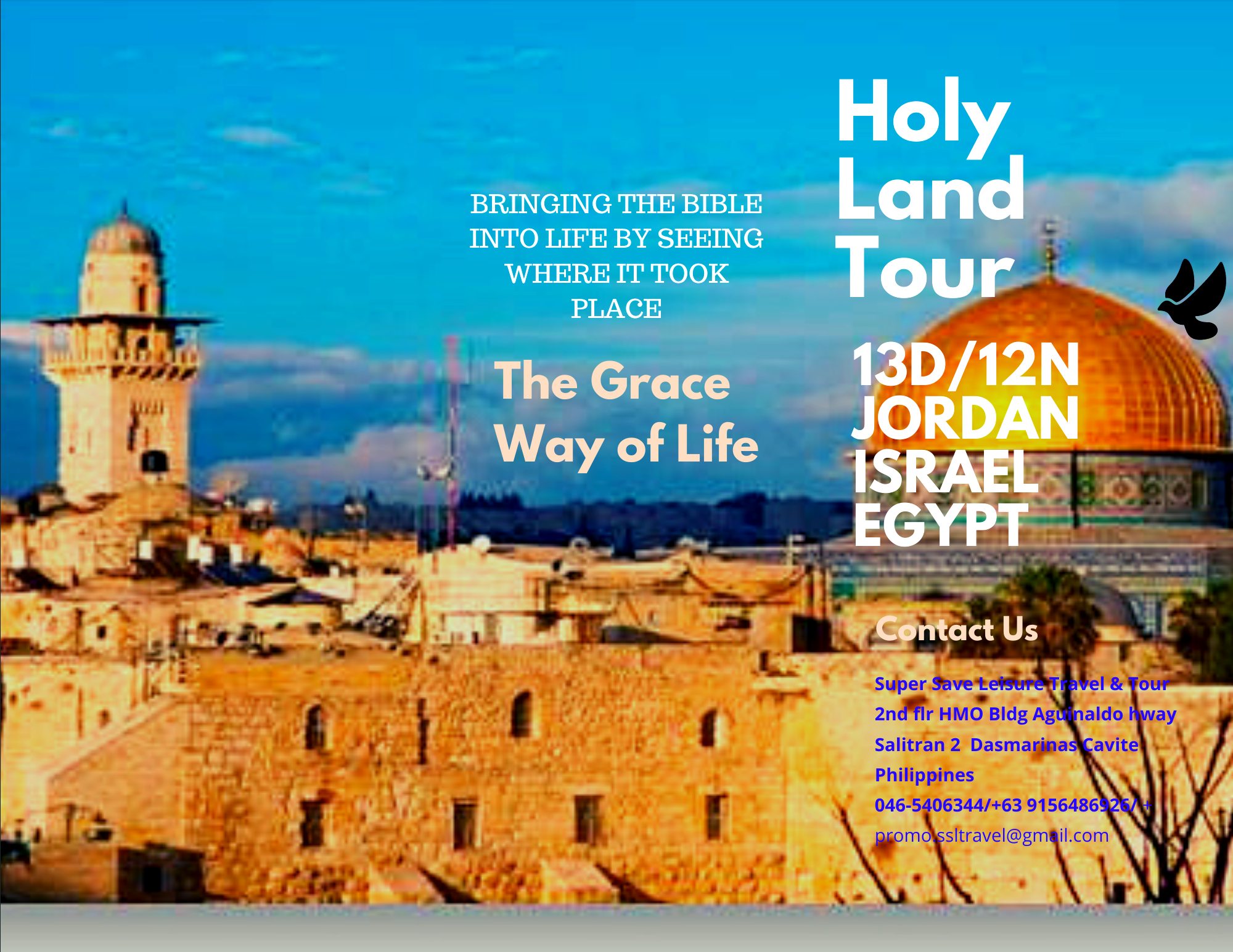
HOLY SITES TO VISIT IN ISRAEL
BRINGING THE BIBLE INTO LIFE BY SEEING WHERE IT TOOK PLACE.
- Mount Carmel
- Cave of Elijah
- Stella Maris Church
- Garden of the Bahai Faith
- Caesarea - Roman Theater & Aqueduct
- St. Peter of Gallicantu
- Mt. Zion- Upper Room - The last supper roo, Dormition Abbey, King David Tomb
- Shepherds Field,
- Church of Nativity
- Milk of Grotto,
- Old City of Jerusalem
- Church of the Condemnation
- Church of the Flagellation
- Via Dolorosa -14th station Golgotha
- Church of the Holy Sepulcher
Mt. Carmel - STELLA MARIS CHURCH
- In the Books of Kings, Elijah challenges 450 prophets of Baal to a contest at the altar on Mount Carmel to determine whose deity was genuinely in control of the Kingdom of Israel. After the prophets of Baal had failed, Elijah had water poured upon his sacrifice to saturate the altar. He then prayed.
- Even when his life was in danger, Elijah went to great lengths to prove to Israel God's power over all things. God was there all along. At Mount Carmel, he burned up the offering even though it was soaking wet. And when the people turned back to him, he sent rain to the land to show that he still loved them.

Elijah on Mount Carmel- 1 Kings 18:16-45 -
16 So Obadiah went to meet Ahab and told him, and Ahab went to meet Elijah. 17 When he saw Elijah, he said to him, “Is that you, you troubler of Israel?”18 “I have not made trouble for Israel,” Elijah replied. “But you and your father’s family have. You have abandoned the Lord’s commands and have followed the Baals.
19 Now summon the people from all over Israel to meet me on Mount Carmel. And bring the four hundred and fifty prophets of Baal and the four hundred prophets of Asherah, who eat at Jezebel’s table.”20 So Ahab sent word throughout all Israel and assembled the prophets on Mount Carmel.
21 Elijah went before the people and said, “How long will you waver between two opinions? If the Lord is God, follow him; but if Baal is God, follow him.
”But the people said nothing.22 Then Elijah said to them, “I am the only one of the Lord’s prophets left, but Baal has four hundred and fifty prophets.
23 Get two bulls for us. Let Baal’s prophets choose one for themselves, and let them cut it into pieces and put it on the wood but not set fire to it. I will prepare the other bull and put it on the wood but not set fire to it. 24 Then you call on the name of your god, and I will call on the name of the Lord. The god who answers by fire—he is God.”
Then all the people said, “What you say is good.”25 Elijah said to the prophets of Baal, “Choose one of the bulls and prepare it first, since there are so many of you. Call on the name of your god, but do not light the fire.”

26 So they took the bull given them and prepared it. Then they called on the name of Baal from morning till noon. “Baal, answer us!” they shouted. But there was no response; no one answered. And they danced around the altar they had made.
27 At noon Elijah began to taunt them. “Shout louder!” he said. “Surely he is a god! Perhaps he is deep in thought, or busy, or traveling. Maybe he is sleeping and must be awakened.” 28 So they shouted louder and slashed themselves with swords and spears, as was their custom, until their blood flowed. 29 Midday passed, and they continued their frantic prophesying until the time for the evening sacrifice. But there was no response, no one answered, no one paid attention
.30 Then Elijah said to all the people, “Come here to me.” They came to him, and he repaired the altar of the Lord, which had been torn down. 31 Elijah took twelve stones, one for each of the tribes descended from Jacob, to whom the word of the Lord had come, saying, “Your name shall be Israel.” 32 With the stones he built an altar in the name of the Lord, and he dug a trench around it large enough to hold two seahs[a] of seed. 33 He arranged the wood, cut the bull into pieces and laid it on the wood. Then he said to them, “Fill four large jars with water and pour it on the offering and on the wood.”34 “Do it again,” he said, and they did it again.“Do it a third time,” he ordered, and they did it the third time. 35 The water ran down around the altar and even filled the trench.
36 At the time of sacrifice, the prophet Elijah stepped forward and prayed: “Lord, the God of Abraham, Isaac and Israel, let it be known today that you are God in Israel and that I am your servant and have done all these things at your command. 37 Answer me, Lord, answer me, so these people will know that you, Lord, are God, and that you are turning their hearts back again.”
38 Then the fire of the Lord fell and burned up the sacrifice, the wood, the stones and the soil, and also licked up the water in the trench.
39 When all the people saw this, they fell prostrate and cried, “The Lord—he is God! The Lord—he is God!”40 Then Elijah commanded them, “Seize the prophets of Baal. Don’t let anyone get away!” They seized them, and Elijah had them brought down to the Kishon Valley and slaughtered there.
41 And Elijah said to Ahab, “Go, eat and drink, for there is the sound of a heavy rain.” 42 So Ahab went off to eat and drink, but Elijah climbed to the top of Carmel, bent down to the ground and put his face between his knees.43 “Go and look toward the sea,” he told his servant. And he went up and looked.“ There is nothing there,” he said. Seven times Elijah said, “Go back.”44 The seventh time the servant reported, “A cloud as small as a man’s hand is rising from the sea. ”So Elijah said, “Go and tell Ahab, ‘Hitch up your chariot and go down before the rain stops you.’”45 Meanwhile, the sky grew black with clouds, the wind rose, a heavy rain started falling and Ahab rode off to Jezreel.
Garden of the Bahai Faith
- The Baháʼí Faith is a relatively new religion teaching the essential worth of all religions and the unity of all people. Established by Baháʼu'lláh in the 19th century, it initially developed in Iran and parts of the Middle East, where it has faced ongoing persecution since its inception. Wikipedia.
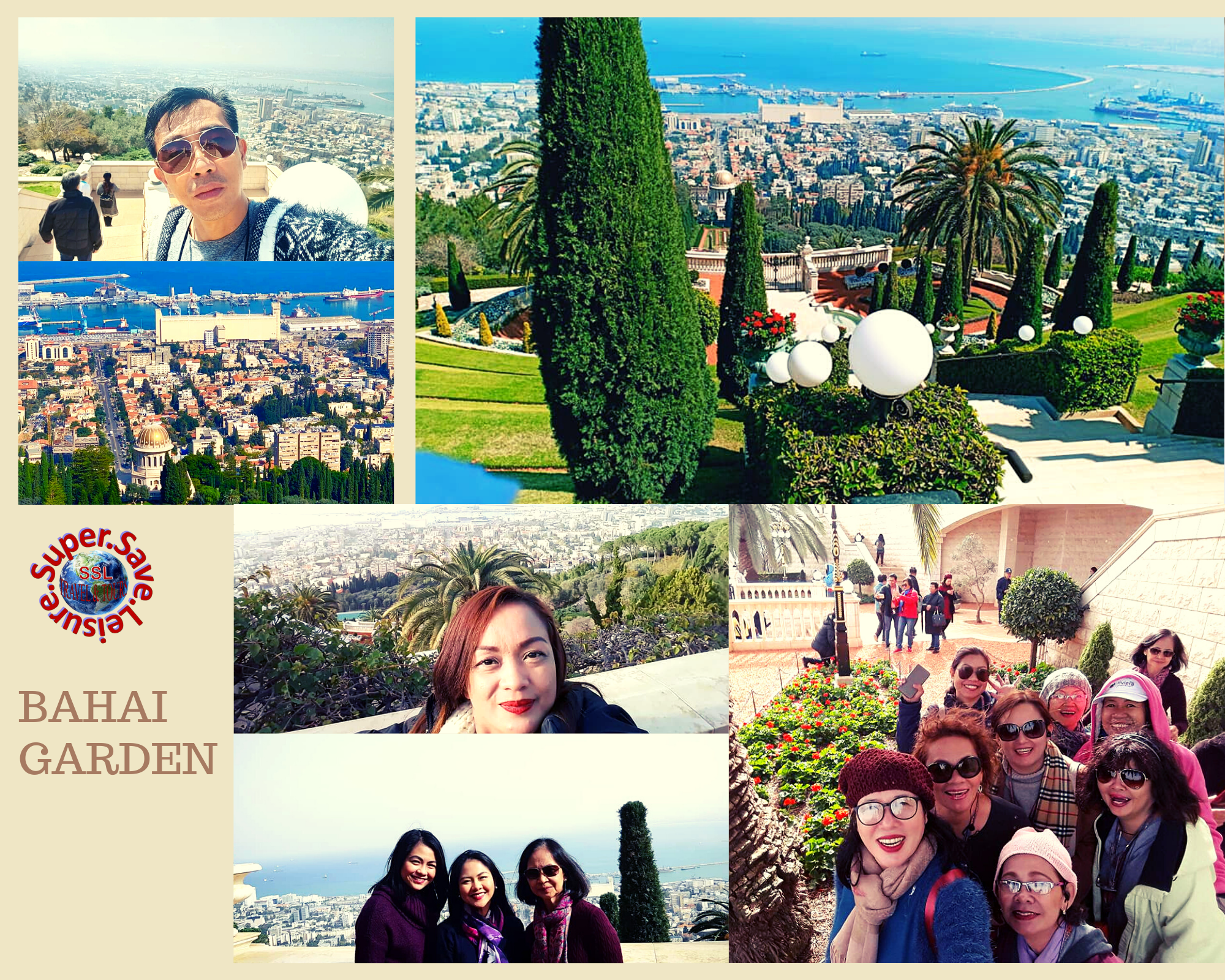
- Bahá’ís do not reject other religious teachings but instead believe that God has been progressively revealed through the ages by a series of divine messengers that includes Krishna, Abraham, Moses, Zoroaster, Buddha, Jesus, and Muhammad hence the use of diverse religious symbols in the ornamentation on the House of Worship. Each of these “Manifestations of God,” as the Bahá’ís call them, has offered teachings that fit the conditions of their time and place. While their social teachings such as what to eat, how to pray, or how to inter bodies may change, certain spiritual tenets are universal, for instance, love and respect your neighbor. As one of the inscriptions inside the temple says, “All the Prophets of God proclaim the same faith”.

CAESARIA
What is Caesarea famous for?
- Caesarea is a most impressive archeological site, open to the public. One can visit the Roman-period theater, King Herods palace, the amphitheater and much more. One can also cross the moat, enter the restored Crusader city and look towards the harbor from the top of the podium.

Caesarea, (“Ruins of Caesarea”), ancient port and administrative city of Palestine, on the Mediterranean coast of present-day Israel south of Haifa.
- The city became the capital of the Roman province of Judaea in 6 ce. Subsequently, it was an important centre of early Christianity; in the New Testament it is mentioned in Acts in connection with Peter, Philip the Apostle, and, especially, Paul, who was imprisoned there before being sent to Rome for trial.

ACTS 31-33
31Then the soldiers, as it was commanded them, took Paul, and brought him by night to Antipatris. 32On the morrow they left the horsemen to go with him, and returned to the castle: 33Who, when they came to Caesarea, and delivered the epistle to the governor, presented Paul also before him.
- There were at least two cities named Caesarea in the first century A.D. The first one was was located near the springs that fed the Jordan river and was visited by Jesus and his disciples (Matthew 16:13). It was the place where the apostle Peter declared the Jesus was the Christ, the Messiah of mankind (see Luke 9).
- The other city, named Caesarea Maritima, can be found on the shores of the Mediterranean. It is where the prophet Agabus prophesied (Acts 21:10) that Paul would be arrested and the place where the the apostle was left to languish in prison for more than two years. This Caesarea was also where a Roman Centurion named Cornelius lived and became the first non-Jewish convert to Christianity (Acts 10).Caesarea Maritima was built around 25 to 13 B.C. and named by Herod the Great in honor of Roman emperor Caesar Augustus. Jewish historian Josephus wrote about the building and completion of the city. In 13 B.C. it became the Roman civilian and military capital of Judea and the official residence of Roman procurators (governors) such as Pontius Pilate and Antonius Felix.
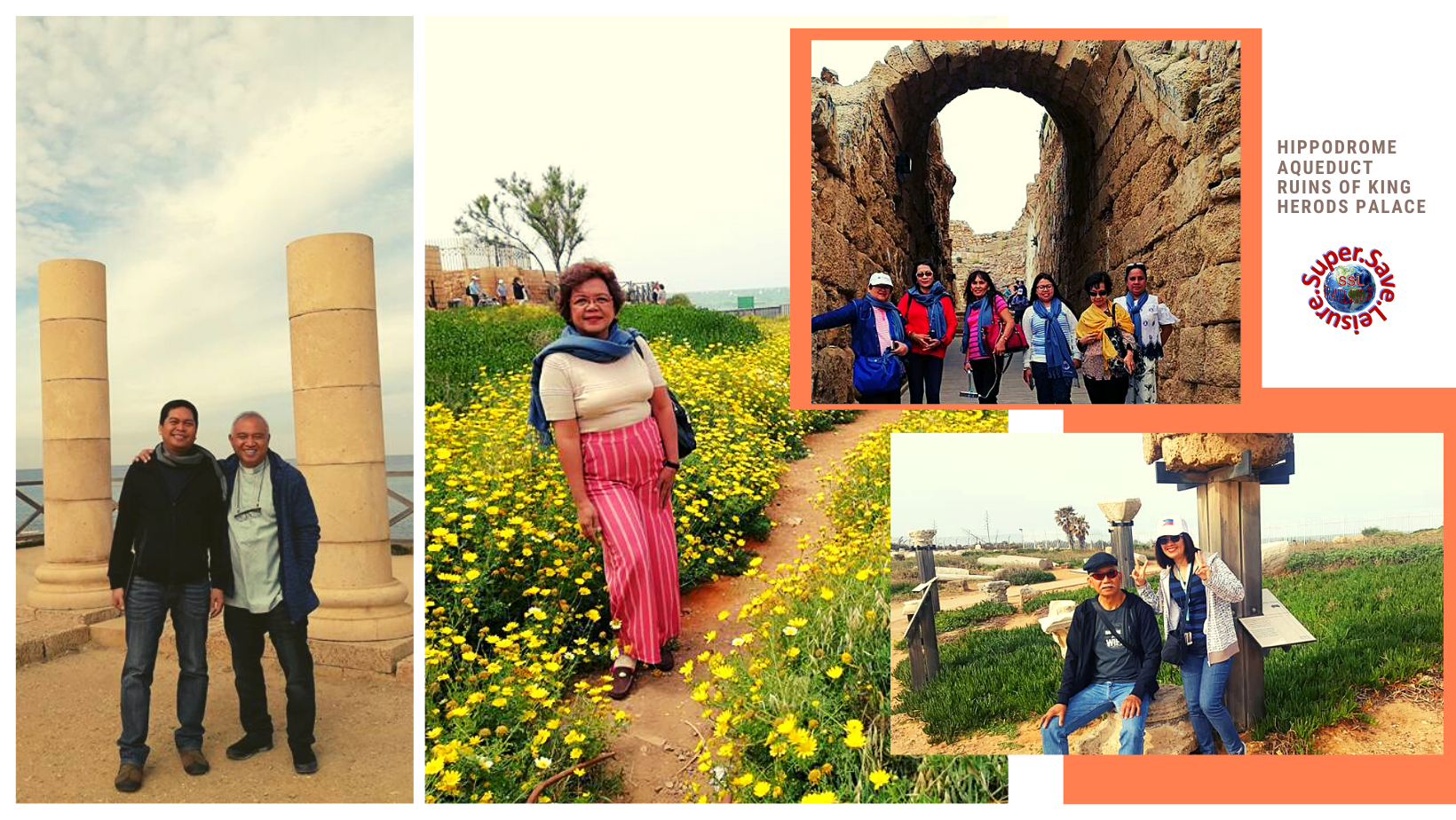
At the end of his third missionary journey the apostle Paul travels to Jerusalem. After arriving in the city he goes to the temple with four Jewish converts (Acts 21:23 - 26). Jews from Asia, assuming he brought Gentiles into a Temple area where they were not allowed, cause a riot.
Roman troops soon arrive to arrest him (which saves him from a certain death). Paul is soon escorted out of the city by Roman soldiers when one of his relatives discovers a murder plot against him. It is in Caesarea Maritima, which is roughly 60 miles from Jerusalem, that Roman governor Felix will hear the case against Paul made by the Jews.
And when it was day, some of the Jews banded together and put themselves under a curse, declaring that they would neither eat nor drink until they had killed Paul. And there were more than forty who had made this conspiracy . . .But the son of Paul's sister heard of their plan to lie in wait; and he came and entered inside the fortress and reported it to Paul. And Paul called one of the centurions and said, "Take this young man to the chief captain, for he has something to report to him." . . .Then the chief captain dismissed the young man, having charged him to tell no one those things that he had reported to him. And he called two certain centurions and said, "Prepare two hundred soldiers, and seventy horsemen, and two hundred spearmen for the third hour of the night, that they may go as far as Caesarea.
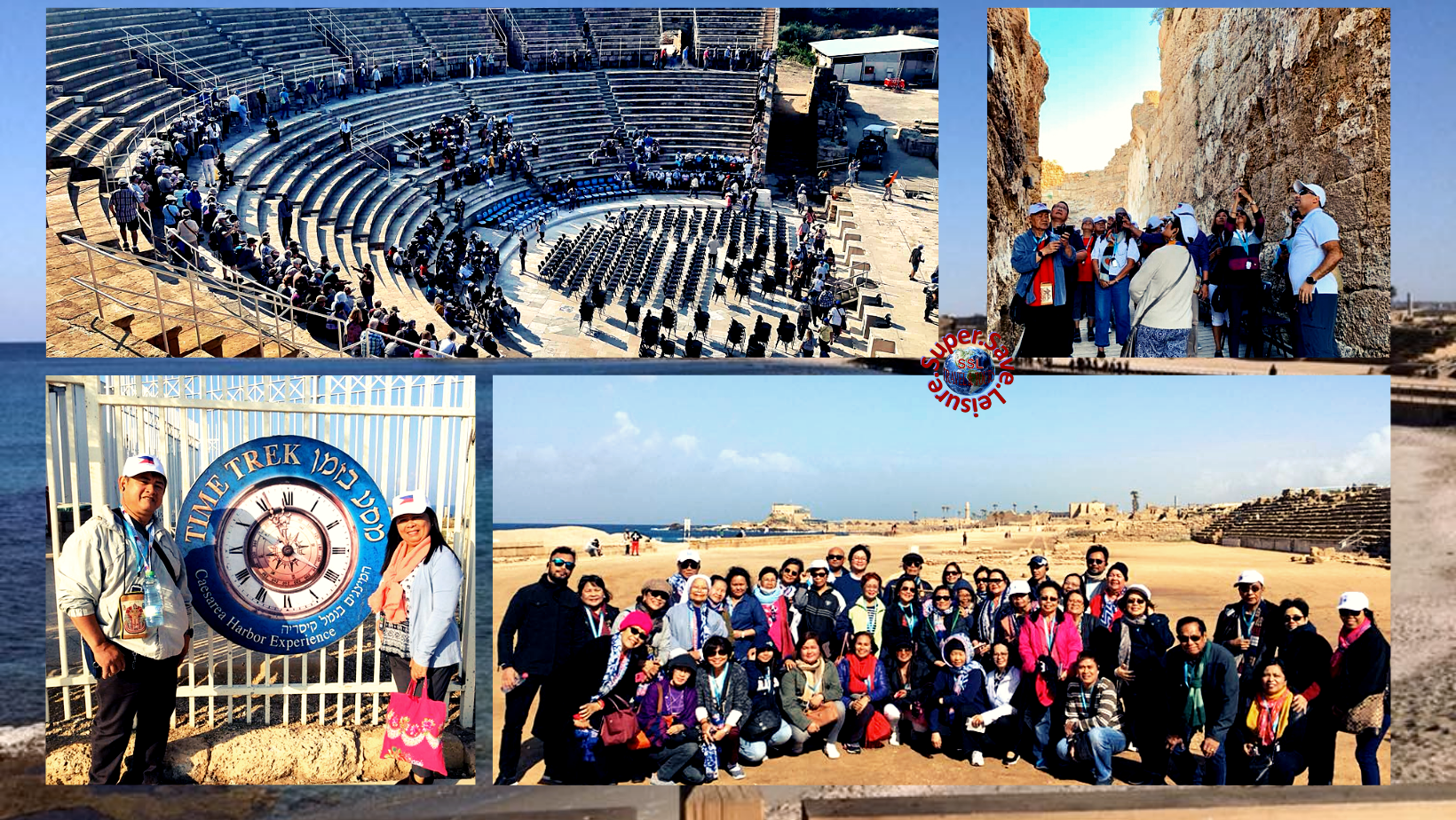
And have beasts of burden ready, that they may set Paul on them, and may carry him safely through to Felix the governor" (Acts 23:12 - 13, 16 - 17, 22 - 24, HBFV).
The Jews, before Felix, accuse apostle Paul of various crimes which they cannot prove (Acts 25:7). Governor Felix, in spite of his innocence, keeps Paul a prisoner in the hope that a bribe will be offered to secure his release (Acts 24:26 - 27).Felix, to facilitate the possibility of a bribe, gives Paul liberties in Caesarea such as not being bound and the right to have people visit him or provide for his needs. A bribe, however, never comes. Paul is kept a prisoner under Felix from early Summer 58 A.D. to early Autumn 60 A.D. until Festus is named the new governor.It is before Festus that Paul, as a Roman citizen, requests in Caesarea that his case be heard by Caesar himself. His request is granted and he is taken to Rome by a Centurion. His travel to Rome is considered his fourth missionary journey.
THE CHURCH ST PETER OF GALLICANTU
- Mass at GALICANTU CHURCH...Gallicantu", meaning cock's-crow. This is in commemoration of Peter's triple rejection of Jesus "... before the cock crows twice." (Mark 14:30).
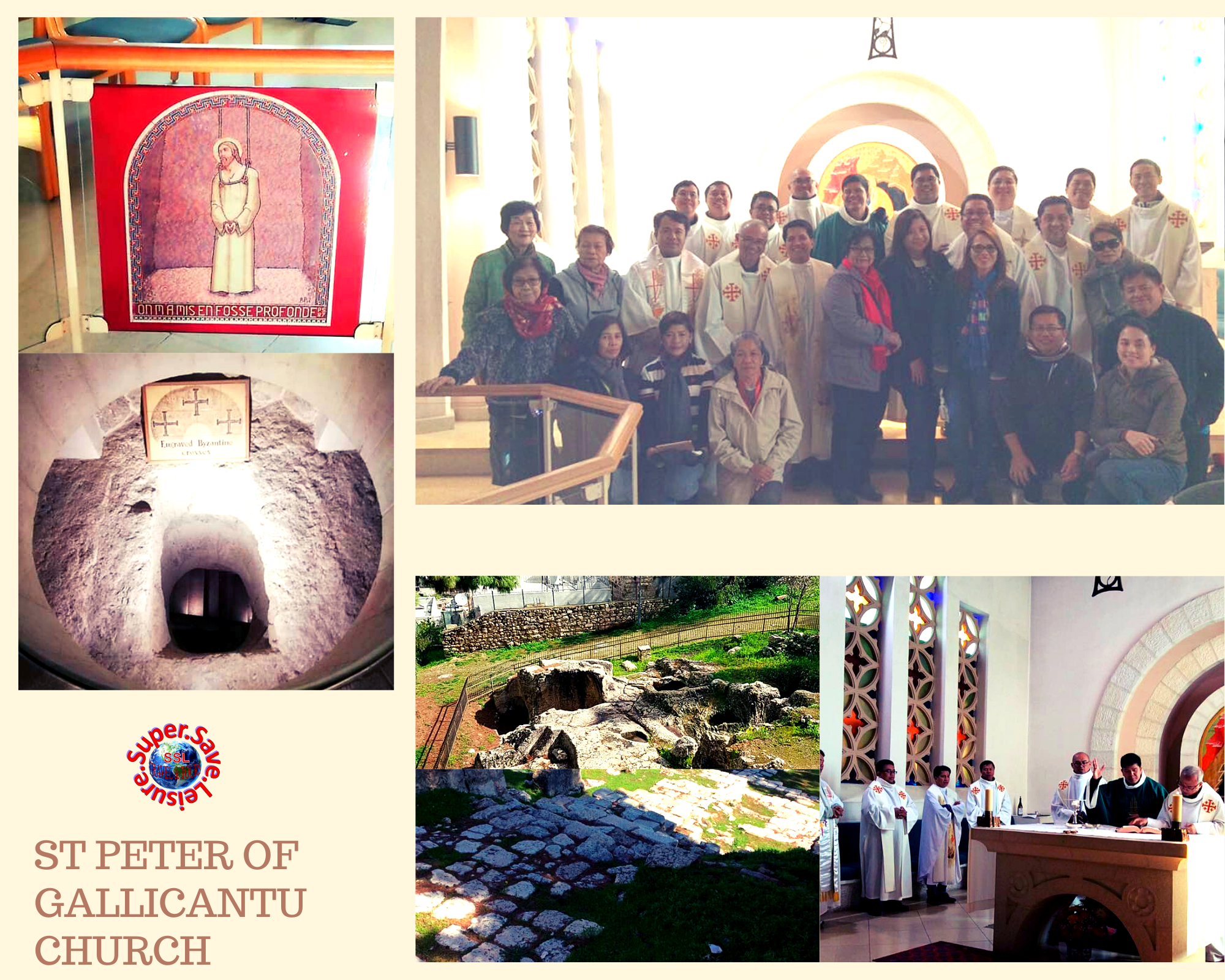
- In the Gospel of Matthew (Matthew 26:56-67), Caiaphas and others of the Sanhedrin are depicted interrogating Jesus.
- Peter’s denial of Christ is recorded in all four Gospels (most succinctly in Matthew 26:69-75). Three of the Gospels also record his bitter tears of remorse.
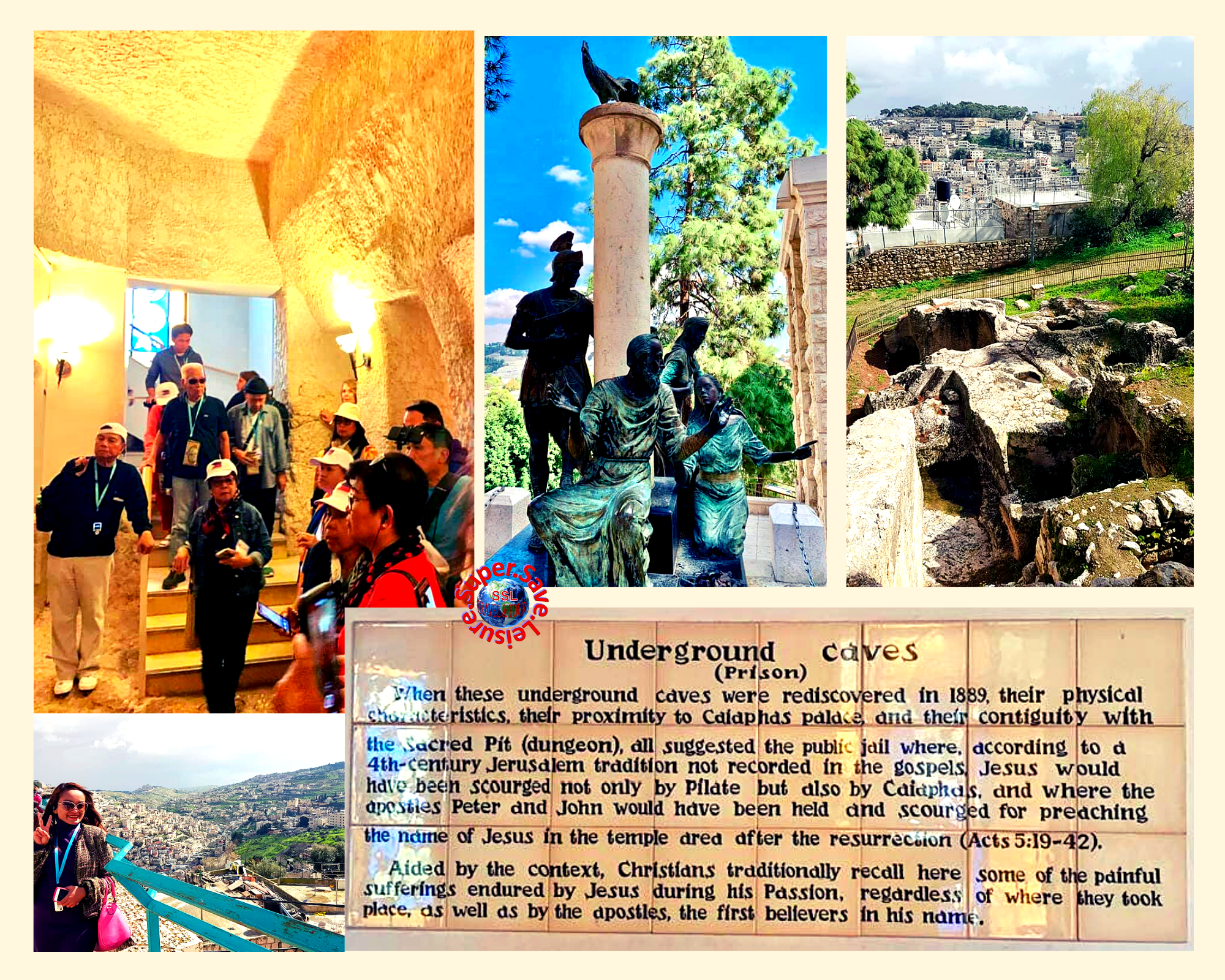
Matthew 26:56-67King James Version
56 But all this was done, that the scriptures of the prophets might be fulfilled. Then all the disciples forsook him, and fled.
57 And they that had laid hold on Jesus led him away to Caiaphas the high priest, where the scribes and the elders were assembled.
58 But Peter followed him afar off unto the high priest's palace, and went in, and sat with the servants, to see the end.
59 Now the chief priests, and elders, and all the council, sought false witness against Jesus, to put him to death;60 But found none: yea, though many false witnesses came, yet found they none. At the last came two false witnesses,61 And said, This fellow said, I am able to destroy the temple of God, and to build it in three days.62 And the high priest arose, and said unto him, Answerest thou nothing? what is it which these witness against thee?
63 But Jesus held his peace, And the high priest answered and said unto him, I adjure thee by the living God, that thou tell us whether thou be the Christ, the Son of God.
64 Jesus saith unto him, Thou hast said: nevertheless I say unto you, Hereafter shall ye see the Son of man sitting on the right hand of power, and coming in the clouds of heaven.
65 Then the high priest rent his clothes, saying, He hath spoken blasphemy; what further need have we of witnesses? behold, now ye have heard his blasphemy.66 What think ye? They answered and said, He is guilty of death.67 Then did they spit in his face, and buffeted him; and others smote him with the palms of their hands.
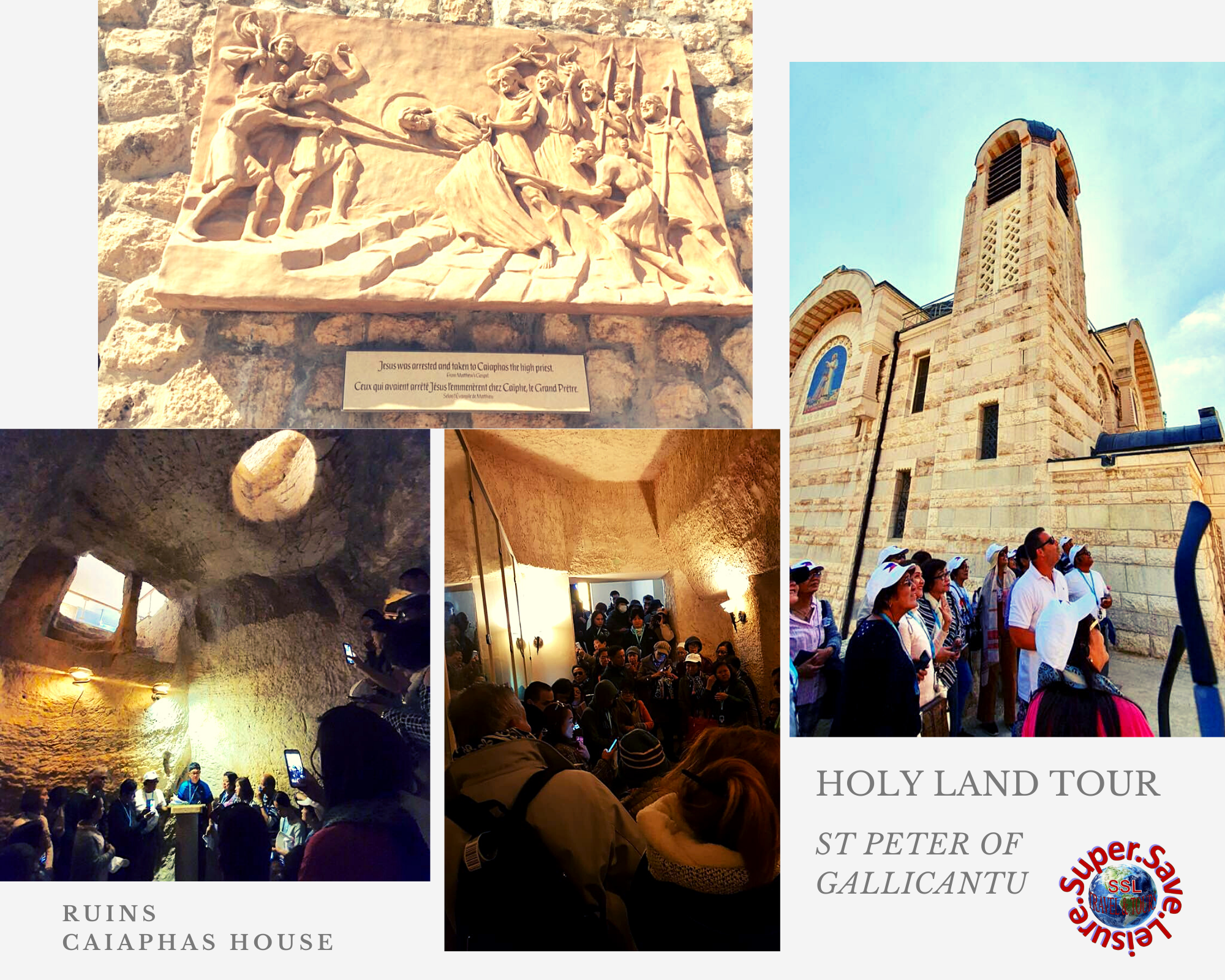
- It is where Jesus is believed to have delivered the Sermon on the Mount.
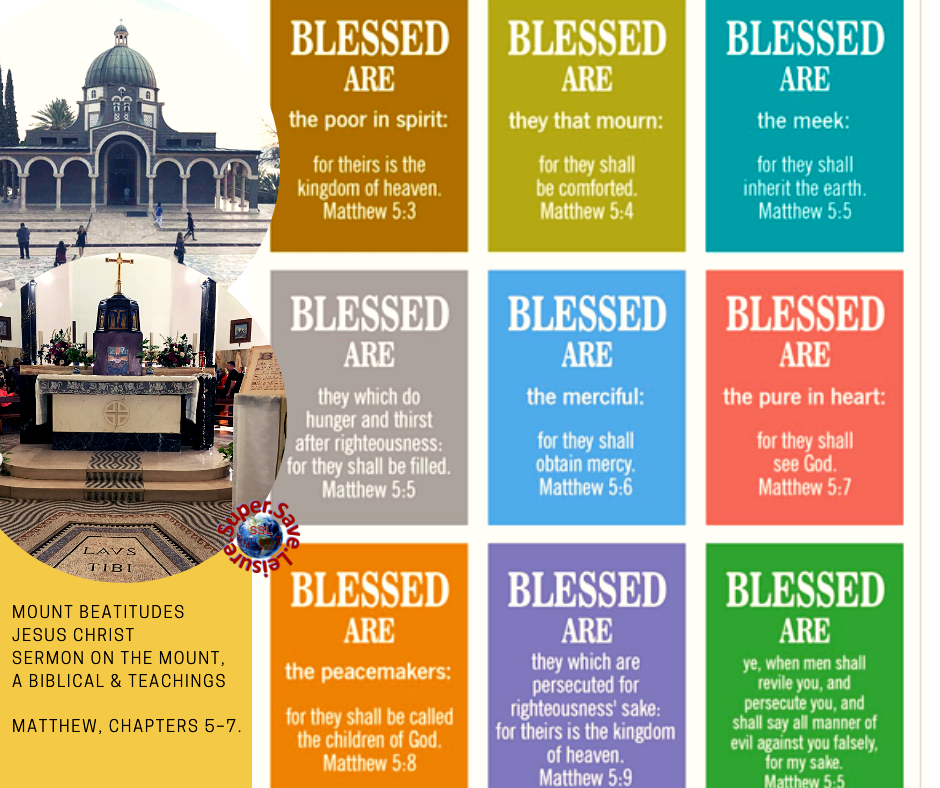
- Beatitude, any of the blessings said by Jesus in the Sermon on the Mount as told in the biblical New Testament in Matthew 5:3–12 and in the Sermon on the Plain in Luke 6:20–23. Blessed are those who mourn, for they shall be comforted. Blessed are the meek, for they shall inherit the earth.
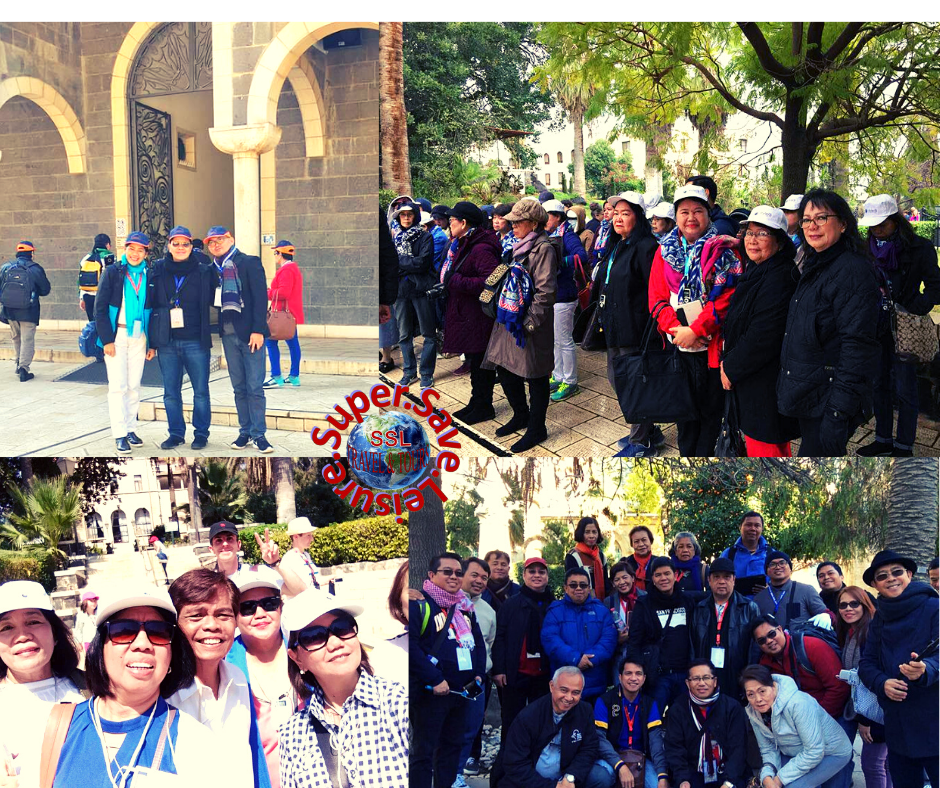
MATHEW 5- Now when Jesus saw the crowds, he went up on a mountainside and sat down. His disciples came to him, 2 and he began to teach them.
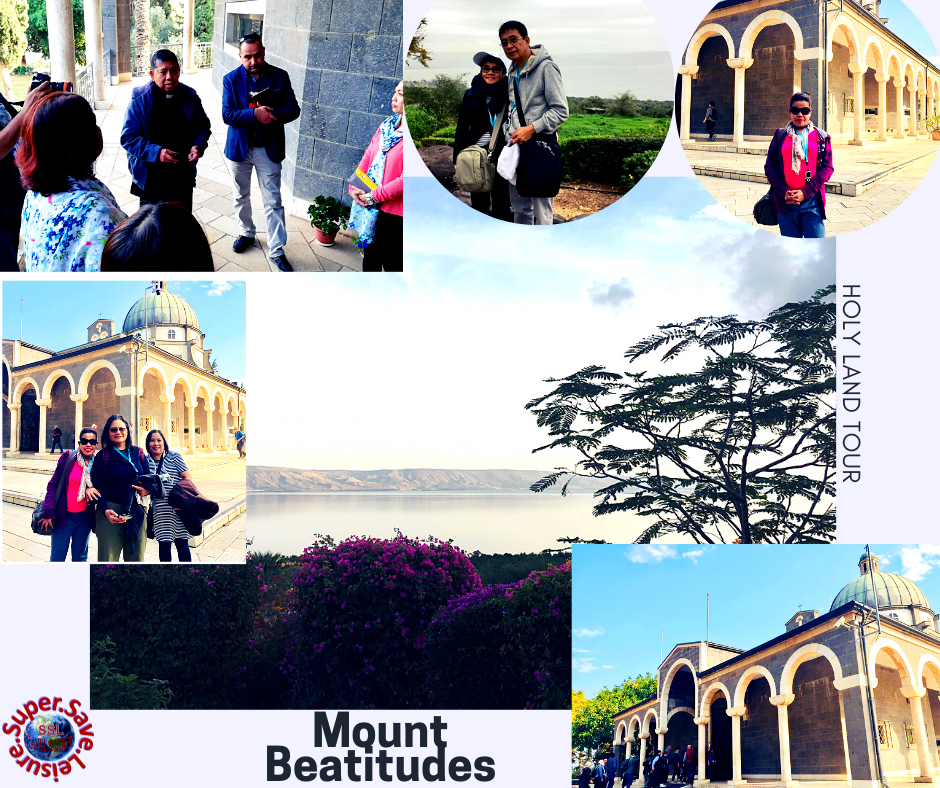
TABGHA
The Church of the Multiplication of the Loaves and Fish, shortened to the Church of the Multiplication, is a Roman Catholic church located at Tabgha, on the northwest shore of the Sea of Galilee in Israel.
Beneath the altar is the rock on which it is believed Jesus placed the loaves and fish when he blessed them.

Traditionally, people have believed that the feeding of the five thousand miracle took place in Tabgha, Capernaum, on the northwest shore of the Sea of Galilee.
The feeding of the 5,000 people. The Feeding of the 5,000 is also known as the "miracle of the five loaves and two fish"; the Gospel of John reports that Jesus used five loaves and two fish supplied by a boy to feed a multitude. When Jesus landed and saw a large crowd, he had compassion on them and healed their sick.
Miraculous feeding of 5000: Matthew 14: 13-21; Mark 6:30-44; Luke 9:10-17; John 6:1-14
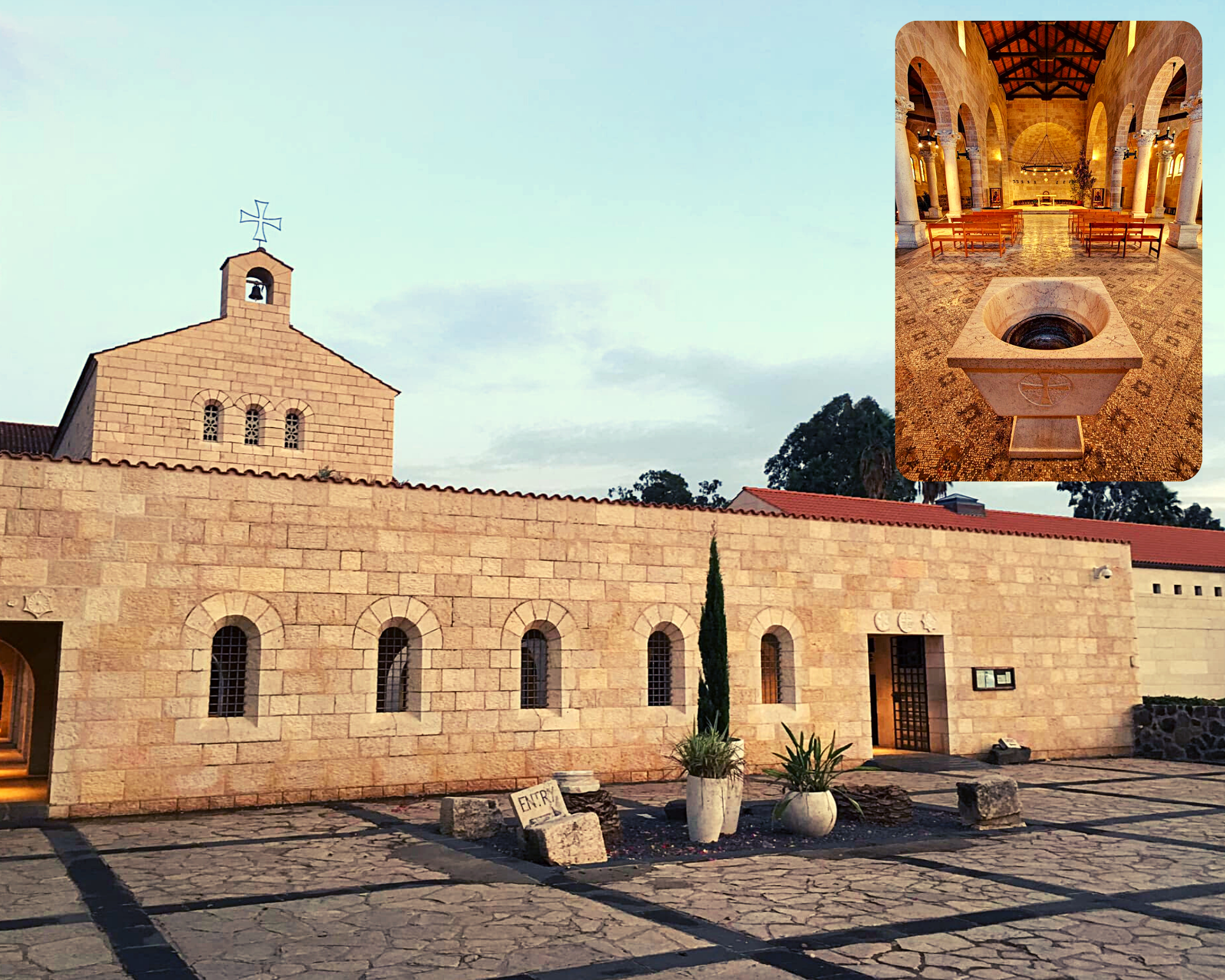
Jesus Feeds the Five Thousand
13 When Jesus heard what had happened, he withdrew by boat privately to a solitary place. Hearing of this, the crowds followed him on foot from the towns. 14 When Jesus landed and saw a large crowd, he had compassion on them and healed their sick.15 As evening approached, the disciples came to him and said, “This is a remote place, and it’s already getting late. Send the crowds away, so they can go to the villages and buy themselves some food.”16 Jesus replied, “They do not need to go away. You give them something to eat.”17 “We have here only five loaves of bread and two fish,” they answered.18 “Bring them here to me,” he said. 19 And he directed the people to sit down on the grass. Taking the five loaves and the two fish and looking up to heaven, he gave thanks and broke the loaves. Then he gave them to the disciples, and the disciples gave them to the people. 20 They all ate and were satisfied, and the disciples picked up twelve basketfuls of broken pieces that were left over. 21 The number of those who ate was about five thousand men, besides women and children.
Church of the Primacy of Saint Peter
- Franciscan is church located in Tabgha, Israel, on the northwest shore of the Sea of Galilee. It commemorates, and allegedly marks the spot, of Jesus' reinstatement of Peter as chief among the Apostles.
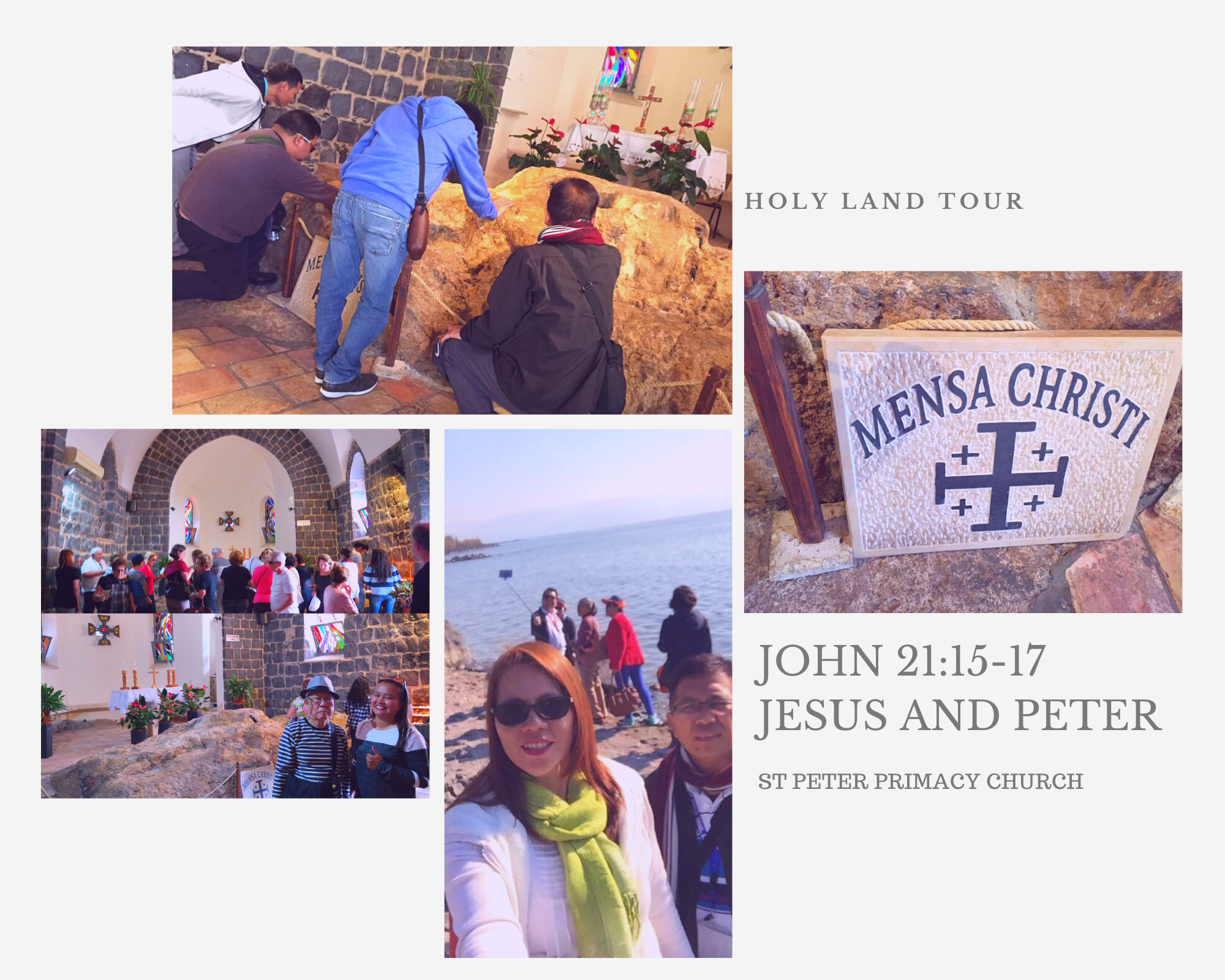
- The modern structure was built in 1933 and incorporates parts of an earlier 4th century church. At the base of its walls, opposite the main altar, foundations of the 4th century church are visible.
- In the 9th century, the church was referred to as the Place of the Coals. This name refers to the incident of Jesus' preparation of meal for the apostles, building a charcoal fire on which to cook the fish.
- Also first mentioned in the year 808 are the "Twelve Thrones", a series of heart shaped stones, which were placed along the shore to commemorate the Twelve Apostles.
- The church survived longer than any other in the area, finally being destroyed in 1263.[1] The present Franciscan chapel was built on the site in 1933. This church was included in the itineraries of Popes Paul VI and John Paul II during their visits to Israel in 1964 and March 2000 respectively.
John 21:1-14 : Breakfast by the Sea of Galilee
9 As soon then as they were come to land, they saw a fire of coals there, and fish laid thereon, and bread.
10 Jesus saith unto them, Bring of the fish which ye have now caught.
11 Simon Peter went up, and drew the net to land full of great fishes, and hundred and fifty and three: and for all there were so many, yet was not the net broken.
12 Jesus saith unto them, Come and dine. And none of the disciples durst ask him, Who art thou? knowing that it was the Lord.
13 Jesus then cometh, and taketh bread, and giveth them, and fish likewise.
14 This is now the third time that Jesus shewed himself to his disciples, after that he was risen from the dead.
JESUS AND PETER - John 21:15-17
15 When they had u finished breakfast, Jesus said to Simon Peter, v "Simon, w son of John, x do you love me more than these?" He said to him, "Yes, Lord; you know that I love you." He said to him, "Feed y my lambs." 16 He said to him a second time, "Simon, son of John, do you love me?" He said to him, "Yes, Lord; you know that I love you." He said to him, z "Tend y my sheep." 17 He said to him the third time, "Simon, son of John, do you love me?" Peter was grieved because he said to him a the third time, "Do you love me?" and he said to him, "Lord, b you know everything; you know that I love you." Jesus said to him, "Feed c my sheep.
Mensa Christi
The church contains a projection of limestone rock in front of the present altar which is venerated as a "Mensa Christi", Latin for table of Christ.
According to tradition this is the spot where Jesus is said to have laid out a breakfast of bread and fish for the Apostles, and told Peter to "Feed my sheep" after the miraculous catch, the third time he appeared to them after his resurrection. (John 21:1–24)
It is disputed whether this table, or the one enshrined at the nearby Church of the Multiplication, is the one mentioned by the pilgrim Egeria in her narrative of the Holy Land circa 380. There is also another table of Christ enshrined at the Mensa Christi Church in Nazareth.
CAPERNAUM - JESUS CHRIST SYNAGOGUE- HOUSE OF ST PETER
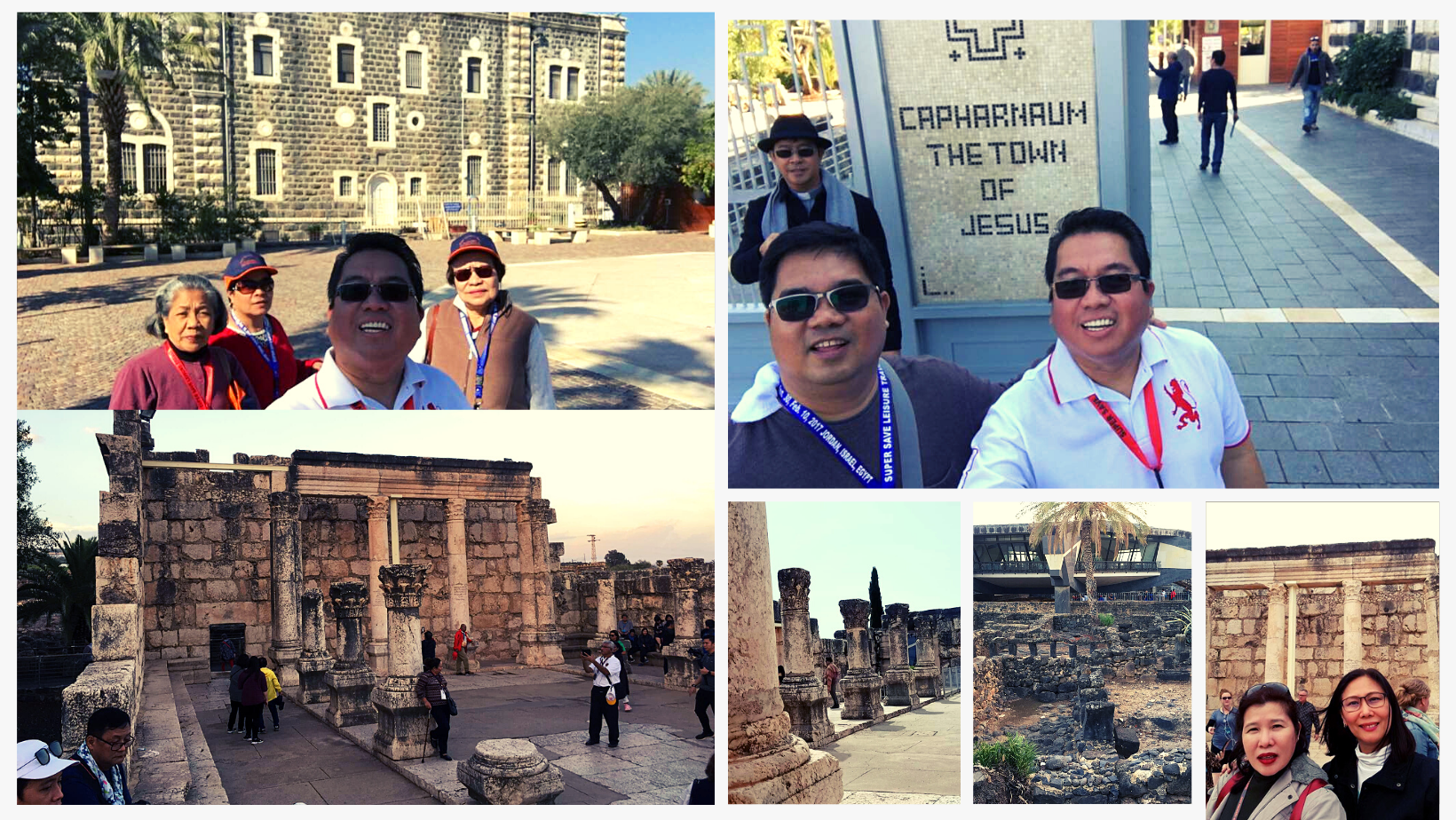
JESUS MIRACLES IN CAPERNAUM
Jesus Heals a Man with an Unclean Demon
- Luke 4:31 And he went down to Capernaum, a city of Galilee. And he was teaching them on the Sabbath,
- The Wedding at Cana
John 2:12 After this he went down to Capernaum, with his mother and his brothers and his disciples, and they stayed there for a few days.
Woe to Unrepentant Cities Luke 10:15
- And you, Capernaum, will you be exalted to heaven? You shall be brought down to Hades.

- Matthew 8:5 When he entered Capernaum, a centurion came forward to him, appealing to him,
- Mark 2:1 And when he returned to Capernaum after some days, it was reported that he was at home.
- Mark 9:33 And they came to Capernaum. And when he was in the house he asked them, "What were you discussing on the way?"
Jesus Heals a Man with an Unclean Spirit
- Mark 1:21 And they went into Capernaum, and immediately on the Sabbath he entered the synagogue and was teaching.
Jesus Heals a Centurion's Servant
- Luke 7:1 After he had finished all his sayings in the hearing of the people, he entered Capernaum.
- Matthew 4:13 And leaving Nazareth he went and lived in Capernaum by the sea, in the territory of Zebulun and Naphtali,
- John 6:17 got into a boat, and started across the sea to Capernaum. It was now dark, and Jesus had not yet come to them.
- John 4:46 So he came again to Cana in Galilee, where he had made the water wine. And at Capernaum there was an official whose son was ill.
- Matthew 17:24 When they came to Capernaum, the collectors of the two-drachma tax went up to Peter and said, "Does your teacher not pay the tax?"
- Luke 4:23 And he said to them, "Doubtless you will quote to me this proverb, 'Physician, heal yourself.' What we have heard you did at Capernaum, do here in your hometown as well."
BOAT RIDE AT THE SEA OF GALILEE
The Sea of Galilee itself is a major Christian tourist attraction because this is where Jesus is said to have walked on the water (John 6:19-21), calmed a storm (Matthew 8:23-26) and showed the disciples miraculous catches of fish (Luke 5:1-8; John 21:1-6).

- John 6:16-21 Jesus Walks on the Water
- 16 When evening came, his disciples went down to the lake,
- 17 where they got into a boat and set off across the lake for Capernaum. By now it was dark, and Jesus had not yet joined them.
- 18 A strong wind was blowing and the waters grew rough.
- 19 When they had rowed about three or four miles,[a] they saw Jesus approaching the boat, walking on the water; and they were frightened.
- 20 But he said to them, “It is I; don’t be afraid.”
- 21 Then they were willing to take him into the boat, and immediately the boat reached the shore where they were heading.
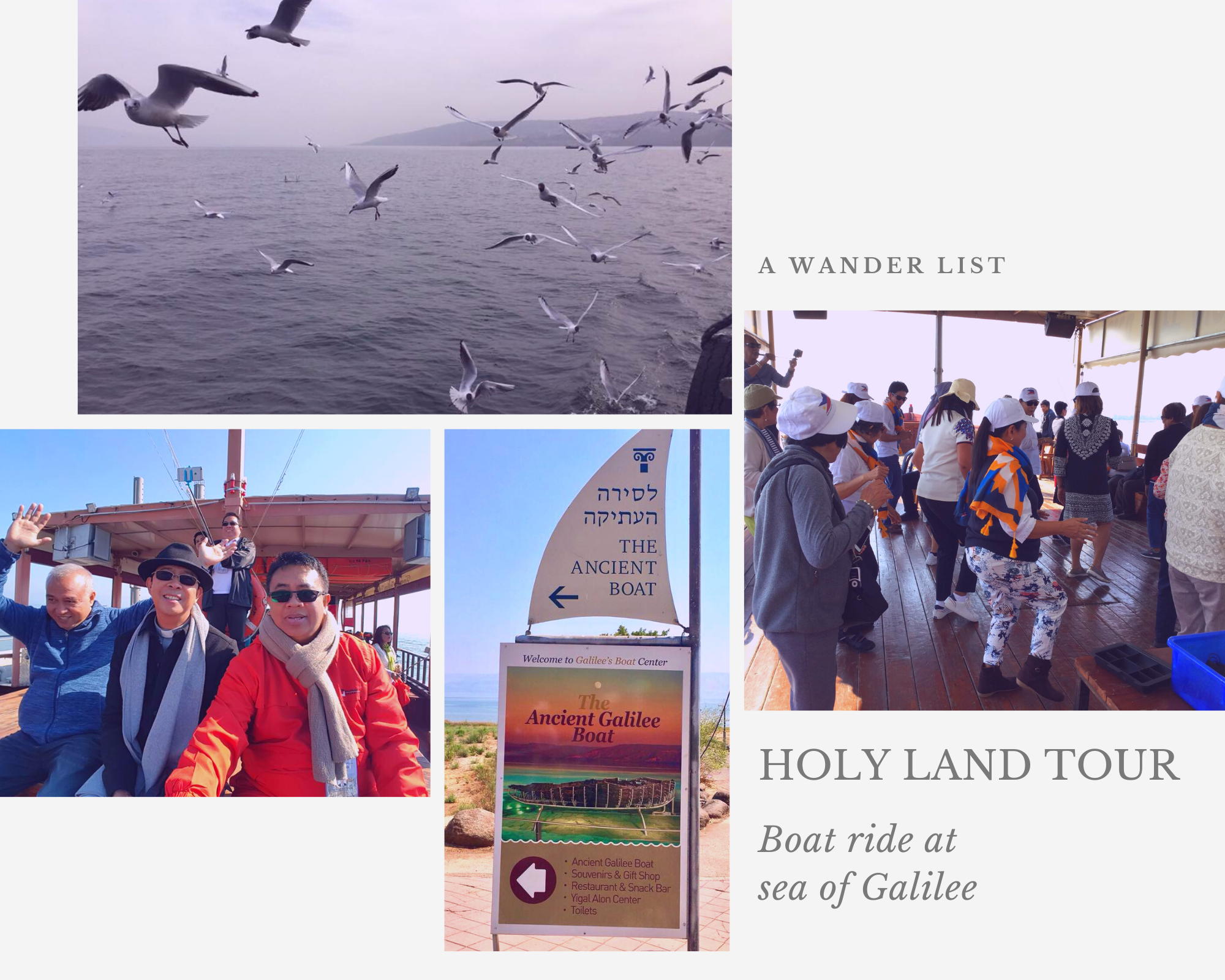
Jesus Calms the Storm - Matthew 8:23-27
23 Then he got into the boat and his disciples followed him. 24 Suddenly a furious storm came up on the lake, so that the waves swept over the boat. But Jesus was sleeping.
25 The disciples went and woke him, saying, “Lord, save us! We’re going to drown!”
26 He replied, “You of little faith, why are you so afraid?” Then he got up and rebuked the winds and the waves, and it was completely calm.27 The men were amazed and asked, “What kind of man is this? Even the winds and the waves obey him!”.